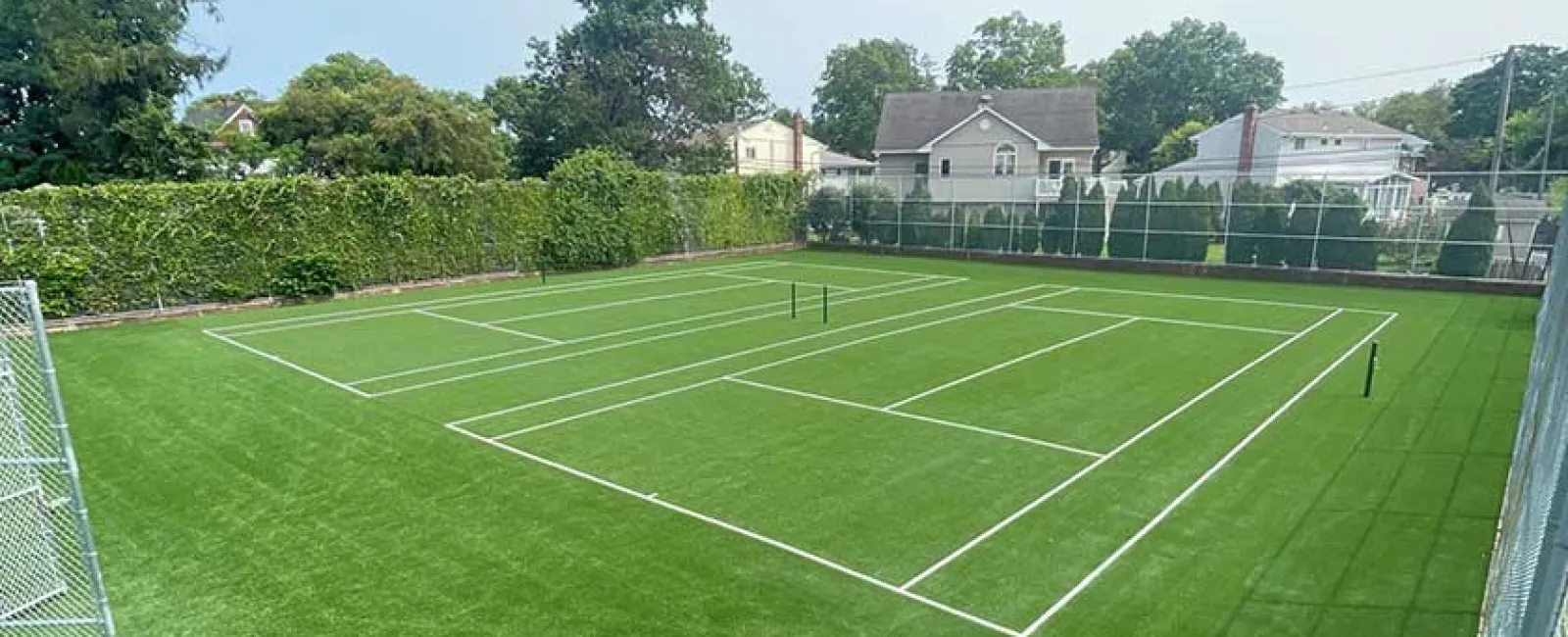A great tennis court is the heart of the game, influencing every serve, rally, and match. Traditional tennis courts (hard, clay, or natural grass) require extensive maintenance, making them costly and time-consuming to manage. This is why many facility owners, from private clubs to large sports complexes, are turning to artificial turf for tennis courts as a modern solution that balances durability, comfort, and aesthetics.
Notably, the choice of synthetic turf plays an important role in the performance of a tennis court. A variety of factors determine how the surface interacts with the ball and players. Whether designing a court for recreational use, competitive play, or multi-sport applications, understanding these factors helps in selecting the best surface for long-term usability.
Our team at Turf Tek USA offers professional artificial grass installation for tennis courts of all levels. Beyond just installation, we assist in selecting high-performance surfaces that optimize playability, minimizes maintenance, and stands up to long-term use. With a focus on quality, precision, and durability, we provide sports facilities, clubs, and private residences with the best synthetic turf solutions for tennis courts.
How Turf Determines Ball Behavior and Player Movement
The type of turf installed on a tennis court directly impacts how the ball reacts upon contact with the surface. Unlike hard courts that produce a fast-paced game with low ball bounce, artificial turf allows for a slightly slower pace while maintaining a consistent and predictable bounce.
Footwork is another important aspect of tennis, and the playing surface should provide excellent traction while allowing controlled sliding when needed. The right synthetic turf for tennis courts is designed to provide stability without excessive friction, allowing for smooth directional changes and minimizing strain on players' joints.
Differences Between Synthetic Turf and Traditional Tennis Surfaces
Hard courts, while durable, often lead to increased player fatigue and joint stress due to their rigid nature. Clay courts provide better shock absorption but require extensive daily maintenance to maintain a smooth and playable surface. Natural grass courts, while visually appealing, wear down quickly and are significantly affected by weather conditions.
Artificial turf eliminates these concerns by offering a surface that is both cushioned and resilient. With proper installation and the right turf selection, players experience a balance between comfort, performance, and minimal upkeep.
Factors to Consider When Selecting Turf for Tennis Courts:
Choosing the Right Fiber Material
The quality of artificial turf fibers directly impacts the longevity and functionality of the court. There are three main types of fibers used in turf manufacturing: nylon, polyethylene, and polypropylene.
Nylon is highly durable but tends to be too stiff for tennis courts, negatively affecting ball behavior and player comfort. Polypropylene, while softer, lacks the resilience needed for high-performance play. Polyethylene is often the preferred choice because it provides a perfect balance of durability, flexibility, and a natural feel.
Selecting the Optimal Pile Height
Pile height, or the length of the synthetic grass blades, affects ball speed, bounce consistency, and player traction. Shorter pile heights create a firmer playing surface, ensuring a more predictable bounce, while longer pile heights provide a softer feel but can slightly slow down gameplay. Most tennis courts feature a medium pile height that replicates the performance of a well-maintained grass court while offering increased longevity.
Understanding Infill
Infill plays a vital role in maintaining the stability and performance of a tennis court. Quartz sand infill is commonly used in tennis applications as it provides firm support without compacting too much over time. Adding the proper amount of infill is also very important. It is recommended to have about four to five pounds of infill per square foot in order to get the right ball bounce and playability.
UV Protection and Longevity
Outdoor tennis courts are constantly exposed to sunlight, making UV resistance an important feature of artificial turf. Our high-quality artificial grass products are designed with UV-stabilized fibers that prevent fading, maintaining the striking green appearance of the surface over time. Investing in this type of UV-resistant turf helps prevent brittleness and degradation, extending the lifespan of the court.
All-Weather Performance and Drainage Capabilities
Proper drainage is essential for keeping tennis courts playable year-round. Advanced backing systems allow water to pass through efficiently, preventing surface pooling and ensuring quick drying after rain. This feature is particularly important for facilities that need to maintain consistent availability, regardless of weather conditions.
Maintenance Requirements
Synthetic turf does not need watering, mowing, or chemical treatments. Routine maintenance includes debris removal and keeping your turf clean. With proper care, a high-quality synthetic tennis court can maintain peak performance for over a decade.
Color Options and Branding Opportunities
While traditional tennis courts are typically green,we also have clay tennis turf. Artificial turf allows for customization in terms of color and branding. Facilities can incorporate custom logos, unique color schemes, or contrasting boundary lines for a distinctive and professional look.
Eco-Friendly and Sustainable Solutions
Sustainability is a growing priority for sports facilities looking to reduce their environmental footprint. Artificial turf eliminates the need for excessive water usage, chemical treatments, and frequent resurfacing, making it an environmentally friendly alternative. With advancements in recyclable turf technology, many facilities are now opting for sustainable turf solutions that align with green initiatives.
From Baseline to Net: Creating a Winning Turf for Tennis Court
Selecting the right turf for your tennis courts requires careful consideration of performance, durability, and long-term maintenance needs. By choosing high-quality synthetic turf with the appropriate fiber composition, pile height, and drainage system, facility owners can create a surface that enhances gameplay while minimizing upkeep.
We provide expert guidance and professional artificial grass installation for tennis courts that meet the highest standards for performance and longevity. Our commercial synthetic turf services are designed to offer durable, high-quality surfaces tailored to the needs of sports facilities, clubs, and private residence buildings.
Contact us today to learn more about our premium artificial turf solutions and transform your tennis court into a top-tier playing experience.


